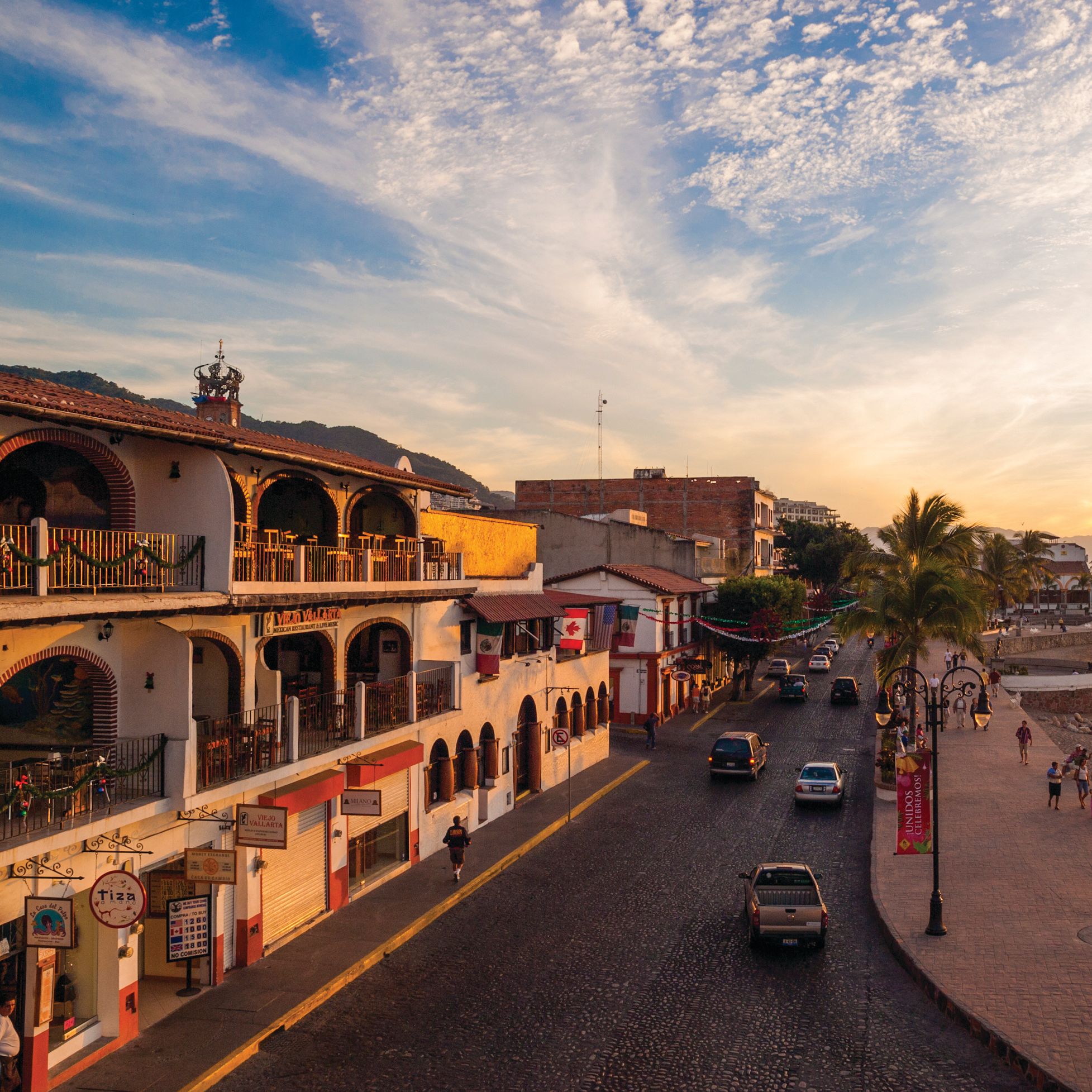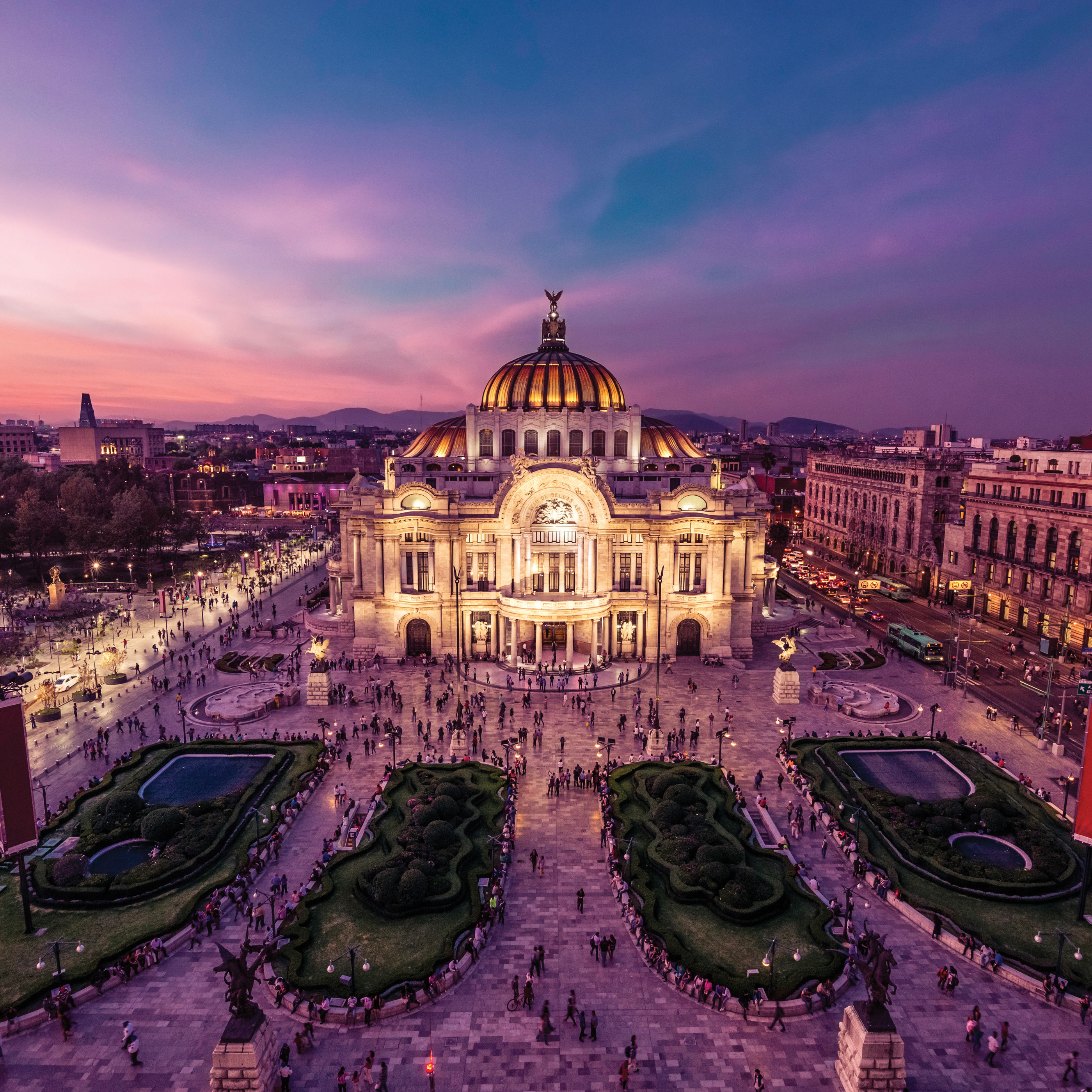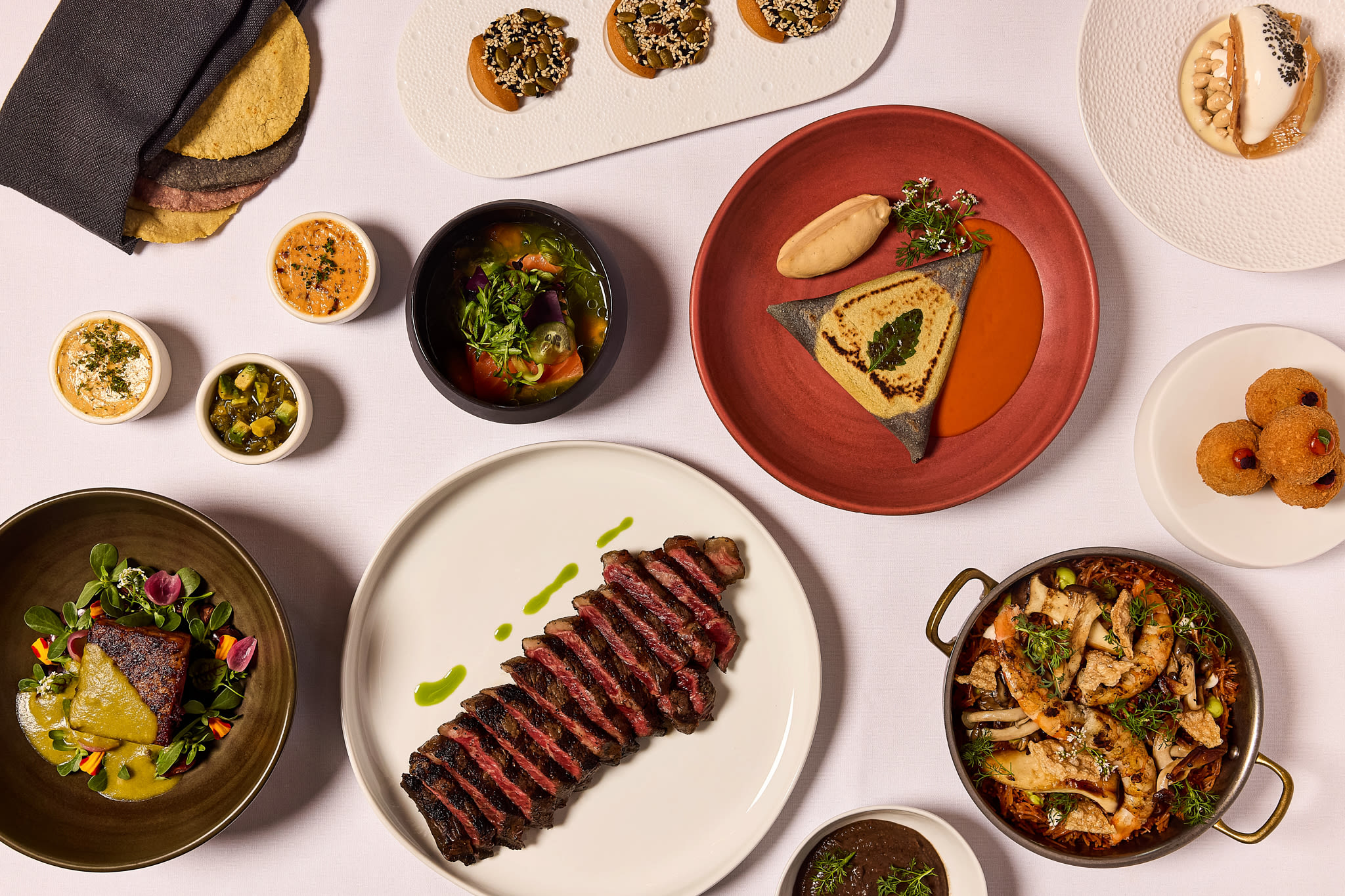Mole y Más: Tasting History in Oaxaca City
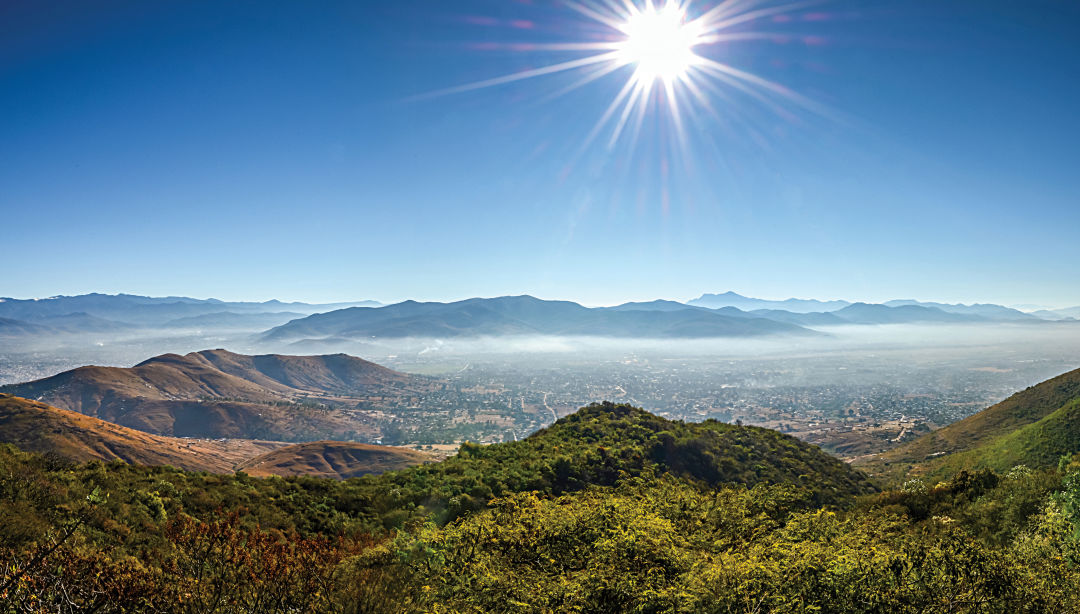
Surrounded by four mountain ranges, Oaxaca’s native population has been protected from encroaching modernity.
Image: rafal kubiak
“The ‘seven moles’ is a myth. They are infinite, depending on the ingredients, the family, the region,” says Rodolfo Castellanos. The very first winner of Top Chef Mexico owns hot spot Origen in Oaxaca City, Oaxaca, with Houston restaurateurs Tracy Vaught and Hugo Ortega, and is helping the couple to open their new downtown Houston restaurant, Xochi.
Today, he’s brought his mom, Evelia, to Origen to teach a class in creating the mother sauces that form the basis of the region’s indigenous cuisine. They’ve filled a table near the kitchen with key ingredients: a diverse mix of chiles and nuts, bananas, chocolate, sesame-topped pan de agua rolls, and a crisp corn tortilla piled with chile seeds that Castellano will burn to ashes before adding to the mix.
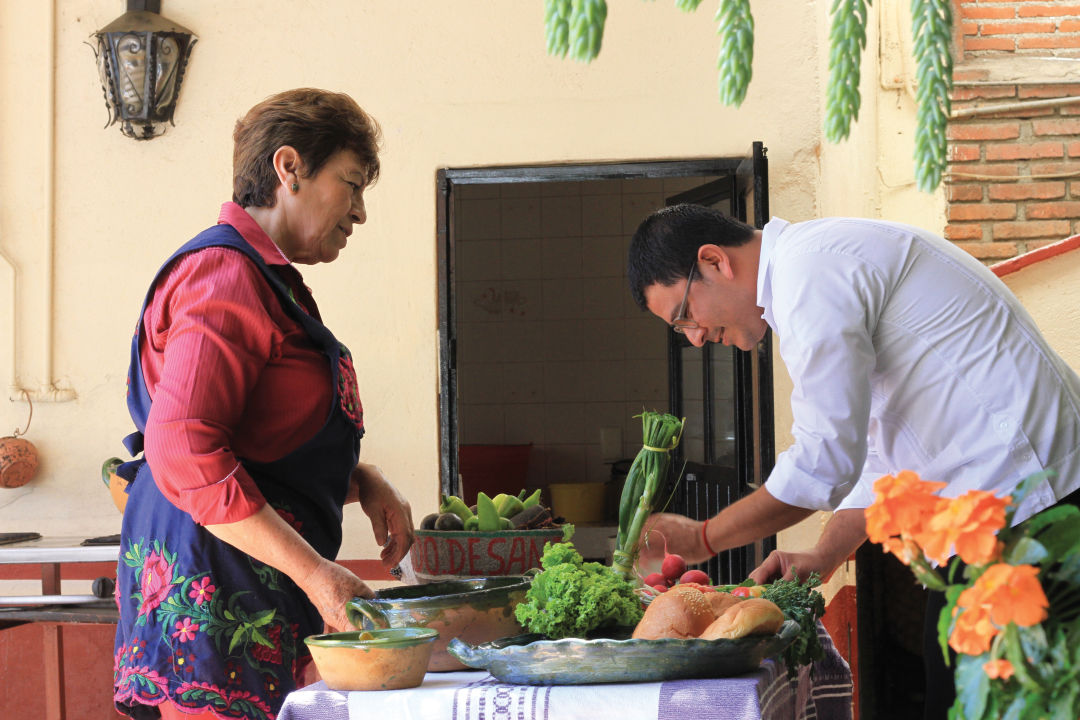
Rodolfo Castellanos with his mother Evelia teach both Spanish and English speakers to make Oaxacan dishes like mole.
While today’s moles trace their origins to the 16th century, and the dawn of European settlement, the Aztecs prepared a sauce by the name mōlli even before that. Though the word “Oaxaca” comes from the tribe’s Nahuatl language, it’s the continued presence of other native people that makes the southern state unique; more than half of Mexico’s residents who still speak indigenous languages live in the region. The old traditions, particularly of the Zapotec and Mixtec people, are vividly alive here, thanks in large part to the protection of the mountains surrounding the Central Valleys where Oaxaca City is located.
Once the components are roasted and toasted, Castellanos throws them in plastic buckets, and we all bring them to the Central de Abastos market to have them milled into pastes in the old-fashioned machines that replaced the flat grinding surface called the metatl. Each electric mill is reserved for a different variety of mole.
As the pastes are being prepared, Castellanos leads us through the vast network of indoor and outdoor stalls, picking up other ingredients little seen outside Oaxaca. Nanches, sweet but musky fruits that resemble cherries, are at most stalls, often both yellow and red versions. They’re best made into syrup for nieves, or shaved ice.
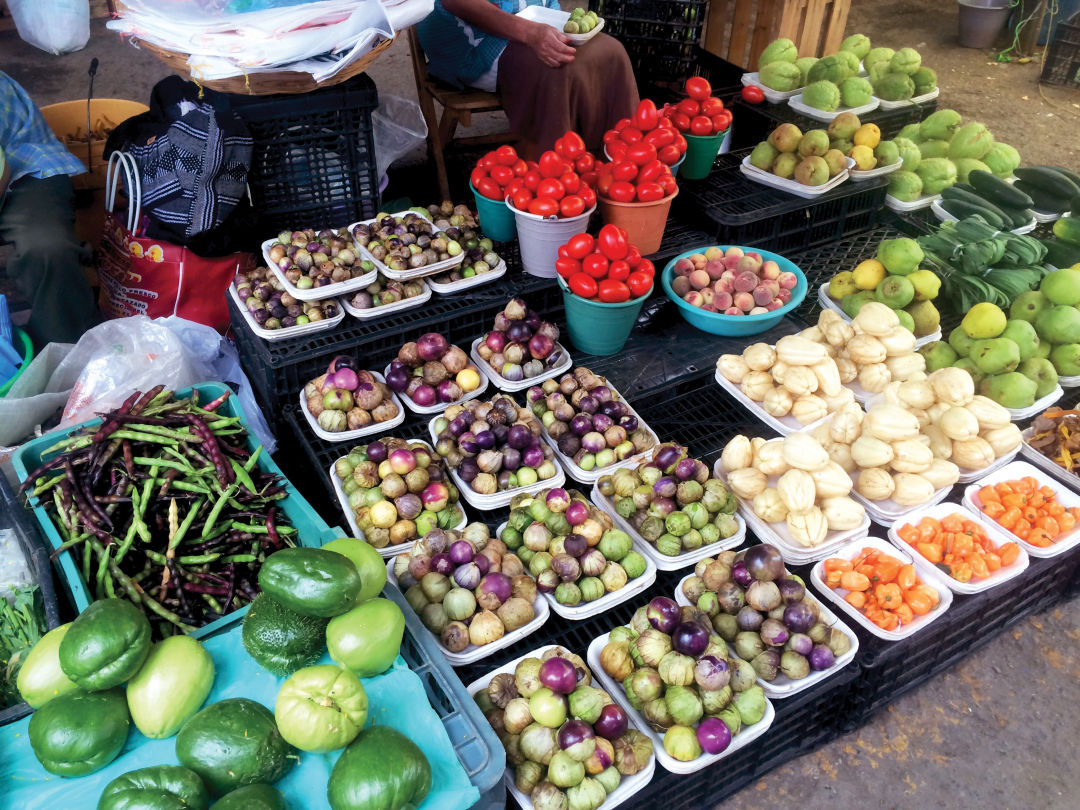
Produce for sale in a Oaxacan market
Image: Alice Levitt
One vendor is selling bags full of tiny purple avocados, meant to be eaten whole, skin and all. Another sells nothing but worms—live, ground or mixed with salt. There’s tejate, a drink of masa and chocolate, bubbling away in a cauldron, and tortillas, speedily flattened from masa and toasted on giant comals.
Back at Origen, Castellanos prepares stunning versions of each mole with a protein traditionally served with the sauce: fish covered in flower petals for the verde, wild mushrooms for the amarillo, and exceptionally tender beef tongue for the chichilo.
The sauces that Americans know best are the ones that require more work. Mole negro, which uses by far the most ingredients and requires hours, if not days, of preparation, is, along with the preparation called coloradito, one of the two that features chocolate. Interestingly, Castellano’s chicken in mole negro, which also contains fruits, isn’t as sweet as the cinnamon-suffused coloradito, served atop a cheese enchilada.
But there are infinite moles left to be eaten. And a never-ending spectrum of other ancient Oaxacan foods to try. Below, a few of our favorites and where to find them.
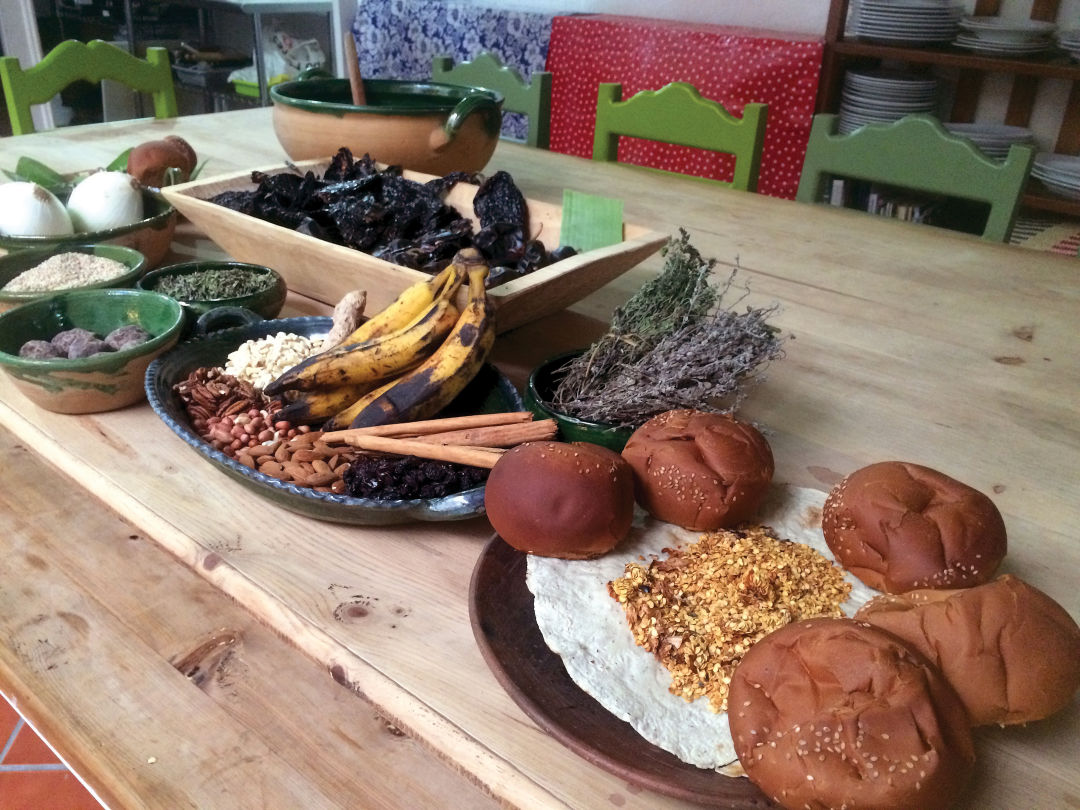
Just as infinite as the variety of moles are the variety of ingredients in each one.
Image: Alice Levitt
1. Best Mole: La Olla
laolla.com.mx
Most restaurants in Oaxaca have mole in some form, but this art-filled spot has six hard-to-find varieties, including mole de chicatanas, made from flying ants. The manchamantel (tablecloth stainer) is especially complex: pork ribs in a fruity chile sauce (some versions have chorizo, too) dotted with grilled apples and pineapple. The Oaxacan chocolate cake with wild mint (poleo) ice cream is also exceptional.
2. Best Corn: Itanoni
513 Belisario Dominguez, +52-951-513-9223
If the tortillas here taste more strongly of corn than the ones out of the bag, it’s thanks to a dedicated crew at the front of the restaurant grinding heirloom kernels into flour. The grain appears in everything from triangular tetelas filled with chicharrones, cheese and cream, to the warm drinking chocolate called atole, thickened with corn.
3. Best Beans: Tlayudas Libres
212 Libres, +52-951-501-1532
In Mexico as in Texas, beans generally mean lard. In Oaxaca, the best vessel for both is a tlayuda, a giant tortilla spread with pork fat and lard-laden refried black beans, then filled with acidic local string cheese and lettuce shreds before being folded in half and grilled over charcoal. Sit on the street and watch the magic happen or take in a telenovela inside.
4. Best Cheese: La Teca
200 Violetas, +52-951-515-0563
Recipes from the distant Isthmus of Tehuantepec vary from those native to Oaxaca City in many ways—and this restaurant is one of the few places in the city itself to find them. There’s no better representation of the cuisine’s penchant for dairy than a dish of sweet griddled plantains bathed in cream and buried in powdery cheese. The estofado, brisket in tomato-based sauce flavored with raisins and sesame, is also worth a visit to the homey restaurant.
5. Best Chiles: Casa Oaxaca
casaoaxacaelrestaurante.com
Think of Alejandro Ruiz as the Robert Del Grande of Oaxacan cuisine. Just as Café Annie brought Southwestern cuisine into the world of fine dining, Ruiz is the maverick who showed that native traditions could work beautifully on upscale plates. His menus here are always packed with moles, but his ceviche-stuffed chile de agua, sitting in an intense passion fruit sauce, is a signature dish that must be tasted.
Insider Tips
- Shop: Market finds are pretty and inexpensive, but just don’t fit as well as designer duds. The embroidered men’s and women’s clothing and accessories at Juan Manuel Bautista pair ancient craftsmanship with modern style.
- Stay: The 16th-century ex–Convent of Santa Catalina was the second Dominican monastery in New Spain. Now it’s a hotel, structured around tree-filled courtyards. Don’t miss the opulent breakfast buffet at its restaurant, El Refectorio, complete with make-your-own chilaquiles and piped-in monastic chanting. Quinta Real Oaxaca, from $160 per night.
- Do: At the junction of four mountain ranges 30 minutes from Oaxaca, the Zapotec people built a pyramid-filled city around 500 BC called Monte Albán. Prepare to spend half a day exploring the art-covered ruins and skeleton-filled museum.
- Fly: United direct to Oaxaca, starting at $304 one-way



